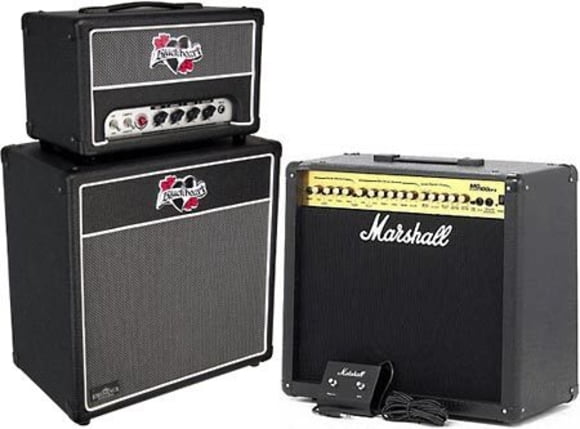7. Stack Or Combo?
Since the 1950s, there have been two basic amplifier setups. Firstly, there's the combination of a head and a speaker cabinet (or a head with two cabinets), which has been known since the 1970s as a "stack." The other setup is the "combo" - where the amplifier electronics are integrated into the speaker enclosure. Most manufacturers produce both variations.
Stack Pros
Amplifiers, especially tube amps, have pretty heavy components. And guitar cabinets aren't lightweight either. Here, you'll find one, two, or even four 10" or 12" speakers installed. For combos, the practical weight limit would be reached with a 2x12" setup, whereas most stacks can boast 2 boxes with 4x10" speakers or even 4x12" speakers. You've probably seen pictures of Jimmy Page or Eddie Van Halen on stage with a Marshall stack featuring two 4x12" cabinets in the background. In the '70s and '80s, many rock bands performed stadium concerts with walls of cabinets (where only one box was miked and amplified through the PA, and the rest were just empty for show).

But it's not just about volume when it comes to a stack (some combos can be insanely loud too), it's also about the sheer volume of air moved, something that only a 4x12" guitar cabinet can do.
The combination of a head and cabinets offers another advantage. You can mix and match different types of cabinets (2x12"/4x10"/closed-back/open-back) or even use models from different manufacturers that might sound better. It's simply more flexible when it comes to sound.
Combo Pros
Of course, combos have their advantages too. One of those is better portability, even though many tube combos can weigh a fair bit. Combos also set up faster because you don't have to mess with cabling between the amp and the cabinet. Depending on the music style (e.g., jazz) or venue (smaller clubs, etc.), a small combo might be more than enough. Lastly, price can also be a deciding factor.






